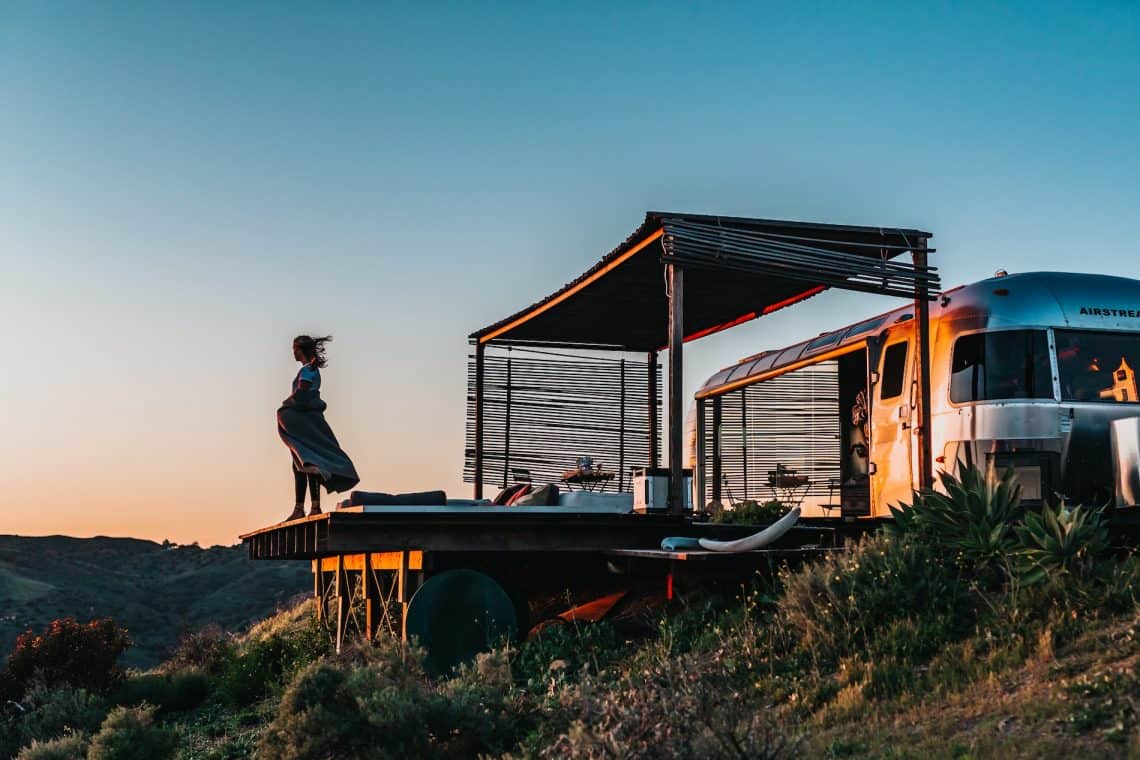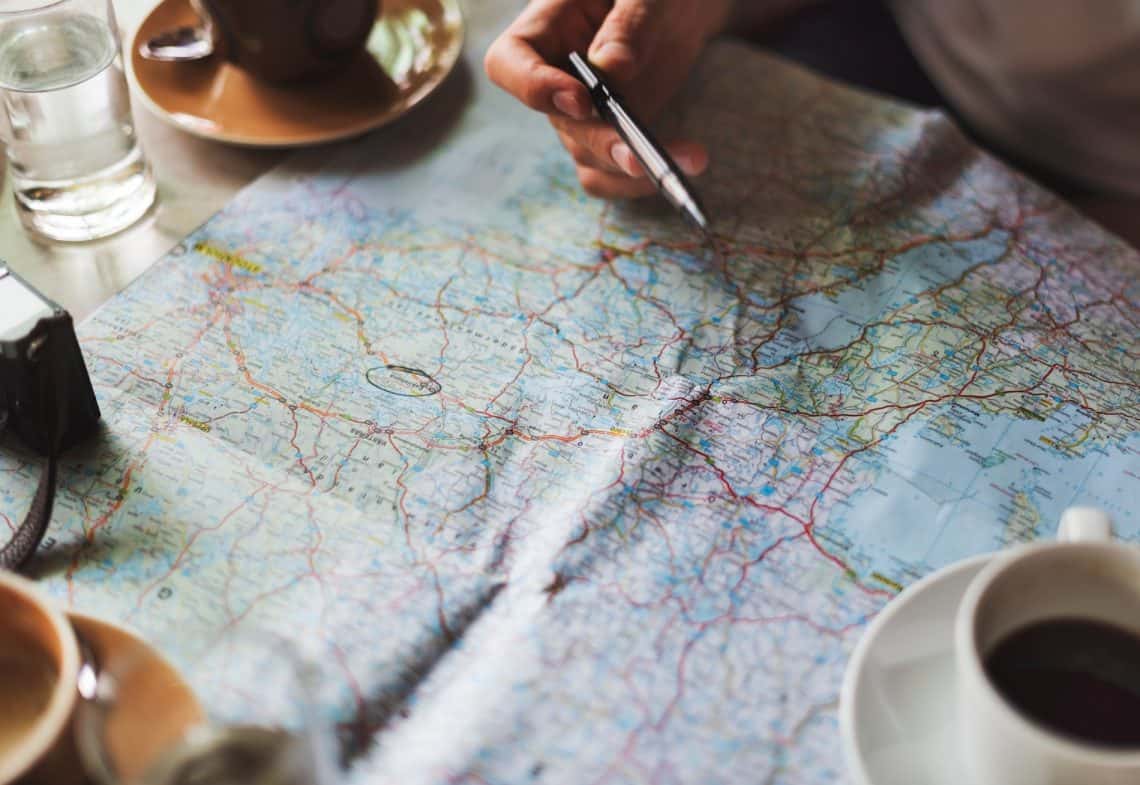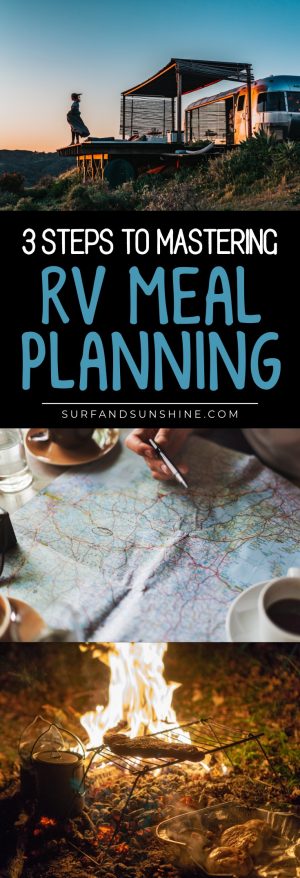One of the biggest perks of vacationing in an RV (apart from all the adventure and quality family time) is that you’ll be traveling in your very own home away from home. This means you can save big bucks on traditional travel budget busters like lodging and eating out. While sleeping is simple enough — ie: find an unoccupied bed, lay down, and close your eyes — successful RV meal planning and cooking requires a little more work.
Out on the road you’ll be trading your gorgeous four burner stove and cavernous refrigerator/freezer for something a little more modest. But don’t be alarmed! With just a little bit of RV meal planning, you’ll still be able to make delicious and nutritious meals for your family while avoiding the pitfalls of roadside dining. Here’s where to start:
Step 1: Think Ahead
Have you ever heard the phrase, “begin with the end in mind?” Well this perfectly describes the strategy successful RV chefs use when planning for a new trip. To get started, create a travel itinerary that includes information like the total length of your vacation, how long you’ll be on the road between stops, how long you’ll be stationary at campgrounds along the way, and whether those campgrounds provide access to electricity. Also include notes about each campground’s location in relationship to shopping resources.
This information will provide the basis for your RV meal planning. With the entire trip laid out on paper, you’ll be able to make decisions about the supplies you’ll need to pack at the beginning, what you’ll need to buy along the way, and the sequence of meals your family will eat throughout your vacation. Once your itinerary is set, you’re ready to move on to the next step.
Step 2: Plan Ahead
Most RV’s include appliances like stovetops, microwaves, and refrigerator/freezers. But if you’ve ever set foot inside an RV, you know space comes at a premium. This is why RV menu planning is a critical step in a successful RV trip. There’s no reason to get too fancy with your planning, and you can still eat the same kinds of food you enjoy eating at home. Just remember, you’ll be working with a few limitations. Here are a some things to keep in mind:
-
- Keep it Simple: You’re on vacation, and that probably means you won’t want to spend your time slaving away over complicated dishes. So keep your meals as simple as possible. Plan out your menu with dishes that use many of the same ingredients, and whenever possible, cook one-pot meals. That will save time on preparation and clean-up.
- Load Up on Shelf-Stable Ingredients: When you’re on the road, it’s not always possible to keep the refrigerator running. So with that in mind, stock your pantry with shelf-stable items such as pastas and jarred sauces, quinoa, rice, salad dressings, oil, vinegar, cereal, bread, hamburger buns, and trail mix. If possible, you can purchase items like cheese, deli meat, milk, eggs, and fresh produce once you arrive at your destination. If that’s not possible, you can pack a cooler with ice to keep your more fragile food items fresh until you’re able to plug in.
- Stock the Freezer: Fill your freezer with items like frozen shrimp, cubed chicken, burger patties, frozen waffles, and ice cream bars. Because they’re frozen, these items will last longer without electricity and give you extra room in the fridge and pantry for other important ingredients.
- Take Food Prep Outside: Not every meal needs to be prepared inside the RV. In fact, one of the most fun parts of an RV trip is gathering around the campfire every evening after all your exploring has ended for the day. The fire, or an outdoor grill, can be a handy cooking tool. Bring a pack of hot dogs or pull those burger patties out of the freezer and toss them on the flames. Add some chips and veggies, and in just a few minutes you’ll have a hearty and fun meal that’s ready to eat.
- Don’t Forget the Slow-Cooker: This one appliance will quickly become your vacation MVP. Just add all your ingredients in the morning, let the slow-cooker simmer all day, and by dinner time you’ll have a piping hot and delicious meal that’s ready to serve. Here is a great collection of slow-cooker recipes.
Once you’ve planned out your meals, make a list of the ingredients you’ll need, and hit the grocery store. Now you’re ready to stock your RV with your shelf-stable supplies and begin prepping your meals.
Step 3: Work Ahead
In the days leading up to your departure date, take a little time to do some of your meal preparation in advance. This is your opportunity to transform bulky cuts of meat into pre-cut frozen packages that will lay flat in your freezer, saving you prep time on your vacation while at the same time creating more of that valuable storage space in your travel kitchen.
If you’re really motivated, you can even begin combining your one-pot and slow-cooker meals together into large ziplock bags to store in your freezer. You can also do the same thing with homemade hamburger patties or cuts of chicken combined with your favorite marinades. Then, when your you’re ready, simply pull your next meal out of the freezer, let it defrost, and you’re off and cooking.
By spending a little extra time before your vacation, you’ll be able to spend more time having fun on your vacation. You’ll also be able to stock your refrigerator/freezer strategically, which is vital when space is limited, and double-check that you haven’t forgotten anything along the way. Now you’re ready to hit the open road!
Pin this for later!
Don’t Forget to Have Fun
While it may sound like a lot of work, planning your meals ahead of time is the best way to ensure your RV vacation remains economical and healthy for your entire family. It’s also a great opportunity to exercise your strategic planning skills while putting your creative side on full display. Once you’re done, you’ll have more time to connect with your family in fun new ways, and after all, isn’t that what vacations are made for?
Guest Post by Kerri Tischler, Co-Owner of Allstar Coaches




Planning an RV meal can seem overwhelming especially the first time. Thanks for these tips!